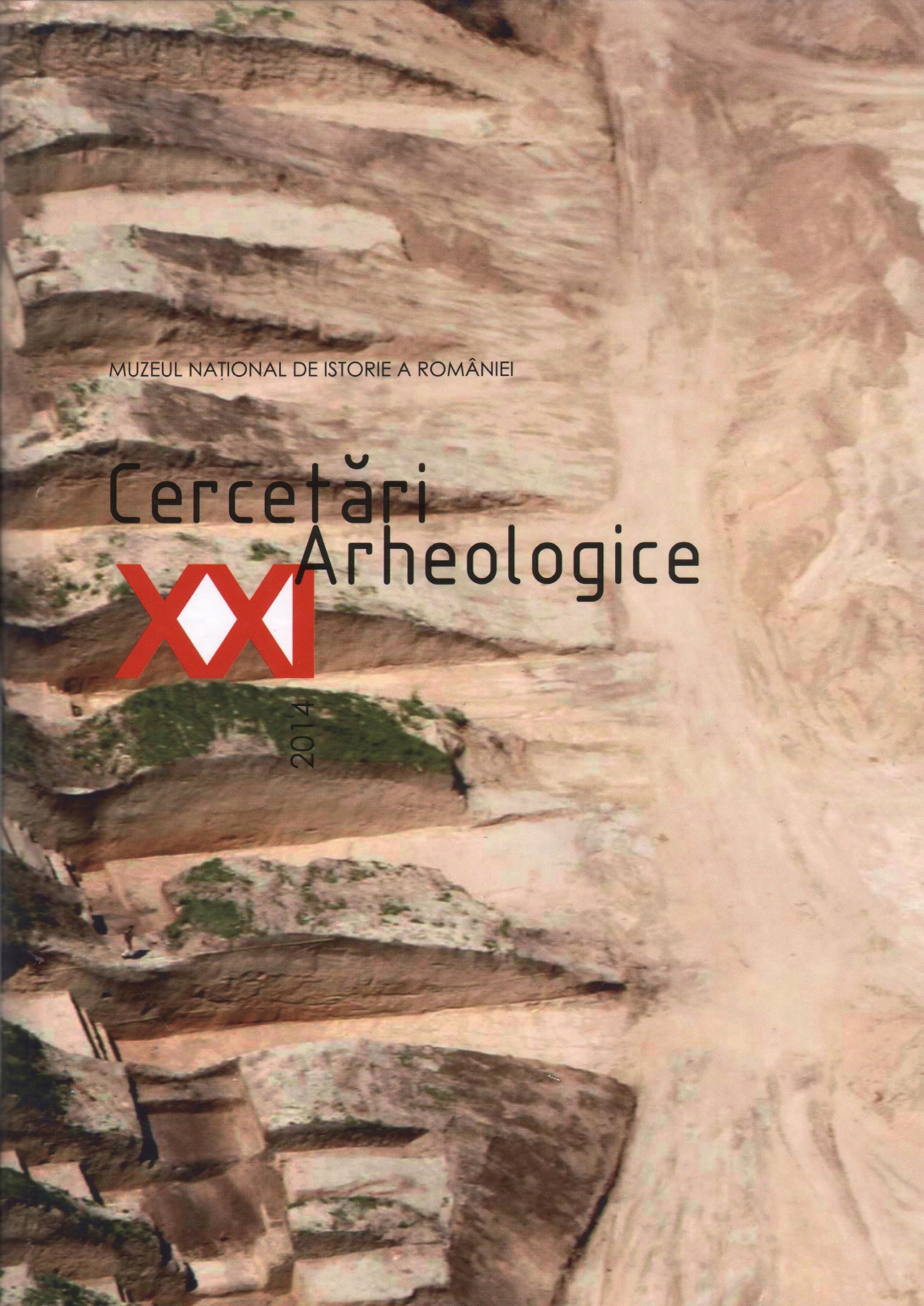Un nou sit de la sfârșitul epocii bronzului pe Valea Mureșului Mijlociu. Raport preliminar asupra cercetărilor arheologice preventive de la Aurel Vlaicu-Obreza
A new site of the late bronze age on the middle Mureş Valley. Preliminary report regarding the preventive archaeological excavations at Aurel Blaicu-Obreza
Author(s): Corina Borș, Luciana RUMEGA-IRIMUȘ, Vlad Rumega-Irimuș, Sebastian Dobrotă, Nicolae Cătălin Rişcuţa, Costin-Daniel ŢuţuianuSubject(s): Archaeology
Published by: MUZEUL NAȚIONAL DE ISTORIE A ROMÂNIEI
Keywords: Late Bronze Age; Early Hallstatt; Noua culture; Gava culture; Cugir-Band group;
Summary/Abstract: The preventive archaeological research campaign 2012 on the newly discovered site Aurel VlaicuObreza (Hunedoara County) was occasioned by the construction works of Al motorway, developed along the 41 h pan-European transportation corridor, runining from West to East along the middle Mureş valley. The site was preliminary identified in autumn 2008, following the archaeological survey made by a team of the Museum of Dacian and Roman Civilisation (Deva). Later on, when the exact location ofthe future motorway was set, a more thorough field survey was undertaken by a team of the National History Museum of Romania. Still in autumn/winter 2011 the archaeological site was overlapped by an apple trees orchard, which impacted significantly the site's integrity and stratigraphy, along with an irrigation underground system (water supply pipes). The preventive archaeological investigations lasted 6 weeks (July-August 2012) and confirmed an important presence of archaeological vestiges. Throughout an open area archaeological excavation, between km 4+900 and km 5+150 ofthe Al motorway, section I was fully investigated an area ofabout !ha, where 133 archaeological complexes (semi-sunken pit dwellings, refuse pits, extraction pits and remains of the socalled "culture layer") were oulined. By opening 7 main trenches (S001 -S007) was possible to observe the concentration of archaeological features in the area between km 5+020 and km 5+ 150, further confirmed by opening of 11 excavation areas (SrSx1). The archaeological discoveries made at Aurel Vlaicu - Obreza indicate the existence of a prehistoric settlement, most probably with a single layer of habitation (significantly disturbed in the upper part). The absence of certain constructive elements like walls, floor boards, hearths etc. in situ are determining - at least for the moment - a cautious approach regarding the functionality of the archaeological vestiges. Also worth to mention the rather small number of pottery found, the high degree of fragmentation of the ceramic material (except six vessels broken in situ), but the large quantity of animal bones. Since the post-excavation analysis of the archaeological material is on-going one only can consider certain work hypothesis in regard to the site's chronology and functionality. Other finds made in here are bronze objects, bone tools (including crenated scapulae) and fragmentary lithic objects. There have been found a series of fragments characteristic to the Noua type pottery, and fragments ofblack polished channelled pottery, specific to the early Hallstatt period. Based on the preliminary post-excavation analysis, the site from Aurel Vlaicu-Obreza is a prehistoric settlement of the Late Bronze Age I Early Iron Age. Within certain archaeological complexes were found in association elements typical for the Noua culture (e.g. handles with knobs, crenated scapulae) with black polished channelled pottery. These discoveries bring new evidence for a much thorough analysis regarding the transition period of Late Bronze Age to Early Iron Age în south-west Transylvania.
Journal: Cercetări Arheologice
- Issue Year: XXI/2014
- Issue No: 1
- Page Range: 151-210
- Page Count: 60
- Language: Romanian

